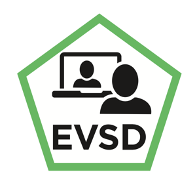A Word From Our CMMI Chief Architect: Assessing Your Organization’s Capability For Remote Work and Virtual Delivery Using EVSD
Trivia Question: What band and what song started with this narration?
“As I mentioned near the close of the last record, this record you are now playing is another example of the completion backward principle. If you can possibly manage the time, please play both sides at one meeting.”
Trivia Rules: Use your brain, memory and reasoning to figure these out vs. google, IMDB, etc.
Why a new Practice Area (PA)? Based on years of research on lessons learned and best practices, this new draft

CMMI V2.0 PA: Enabling Virtual Solution Delivery (EVSD) was created to provide organizations, projects and individuals with a set of best practices organized in a way to provide them with a consistent means for continually improving their performance for virtual/remote delivery and work.
Coming full circle, this PA represents a “completion backwards” principle by leveraging the information gathered from previous years of research on this topic, with an eye toward the future of virtual course delivery and other similar events and activities, including managing a remote workforce approach as well as those virtual activities allowed in CMMI V2.0 Benchmark appraisals.
Let’s get some terminology out of the way:
Virtual solution delivery (new CMMI V2.0 glossary entry)
Includes use of virtual and remote methods to deliver a given service, process, activity, task or solution to customers and affected stakeholders.
Solution (current CMMI V2.0 glossary entry)
A product, product component, service, service system, service system component, or delivered or acquired product or service.
So what does the EVSD require?
In short: an approach and a plan for virtual or remote delivery or work.
Enabling virtual solution delivery includes identifying, assessing and addressing virtual and remote delivery needs and constraints in a systematic and consistent manner, including:
- An individual event, e.g., delivering a training course
- A project, e.g., conducting an appraisal, audit, team meeting, peer review, sprint backlog grooming, business meetings and technical reviews
- An organization-wide communication channel, e.g., standardized protocols, processes and systems to support organization-wide communication and collaboration, such as working remotely or virtually
Needs and constraints include at a minimum:
- Criteria for virtual delivery options vs. in-person or direct delivery
- Delivery effectiveness and efficiency
- Delivery quality and fidelity
- Security, privacy, confidentiality and nondisclosure constraints
- Workarounds and mitigations for when delivery gets interrupted
- People, process, infrastructure and tools/systems
EVSD currently contains seven practices as follows. As an organization matures, its virtual delivery capability matures, and improvements to performance and outcomes are realized.
Level 1
EVSD 1.1 Identify and record virtual solution delivery needs and constraints.
EVSD 1.2 Deliver virtual solutions.
Level 2
EVSD 2.1 Develop, communicate, and follow an approach to address virtual solution delivery needs and constraints; and keep it updated.
EVSD 2.2 Evaluate the effectiveness and fidelity of the virtual solution delivery approach and take action to improve performance.
Level 3
EVSD 3.1 Establish and deploy an organizational strategy and approach, and functional capability for delivering virtual solutions.
EVSD 3.2 Periodically perform virtual solution delivery reviews and evaluations throughout the organization.
EVSD 3.3 Take actions based on virtual solution delivery reviews and evaluations to verify that they are effectively addressing the needs and constraints of the customers and the organization.
Additionally, EVSD provides a clear evolutionary path to move from an ad hoc, individual effort for virtual delivery to a consistent organizational approach. The explanatory practice information for EVSD Practice 2.1 contains a pretty comprehensive list of items to consider for an initial approach, and we will continue to update the entire PA as we get feedback from the pilot reports and field, so please keep those reports and comments pouring in!
Learn how you can specialize in
Virtual Solution Delivery at this link.
Stay tuned for more and submit your requests for future topics to
[email protected].